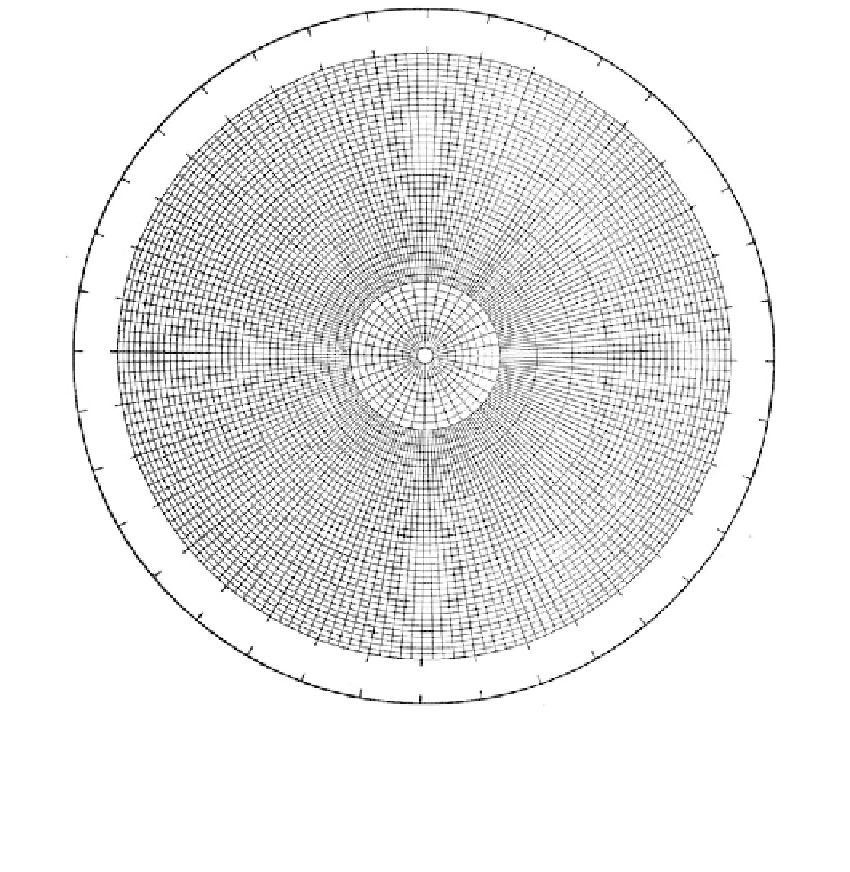Environmental Engineering Reference
In-Depth Information
Planes
260
80
90
FIGURE 6.6
Polar equal-area stereo-net in 20º intervals. (Computer-drawn by Dr. C. M. St. John of the Royal School of
Mines, Imperial College, London. From Hoek, E. and Bray, J. W.,
Rock Slope Engineering
, 2nd ed., Institute of
Mining and Metallurgy, London, 1977. With permission.)
spherical projection of the plane. Spherical projections on a plane surface can be repre-
sented by stereographic projections, which are geometric projections of spherical coordi-
nates onto a horizontal plane. If various points on the great circle are projected to the
zenithal point of the sphere
(Figure 6.10),
a stereographic projection of the plane (stere-
ogram) appears on the lower half hemisphere. The projection of a series of planes striking
north-south and dipping east-west results in a net of meridional (great circle) curves as
shown in Figure 6.10.
The hemisphere is divided by lines representing meridians and by a series of small cir-
cles of increasing diameter to form a stereo-net, or stereographic net, of which there are
two types:
1.
Nontrue-area stereo-net or Wulff net (
Figure 6.11)
2.
Lamberts equal-area plot or Schmidt net (
Figure 6.12)
,
which is used for statisti-
cal analysis of a large number of smaller planar features such as joint sets
The spherical projection of the plane in
Figure 6.9
representing strike and dip can be
fully represented as a pole on the surface of the sphere, the location of which is a line


